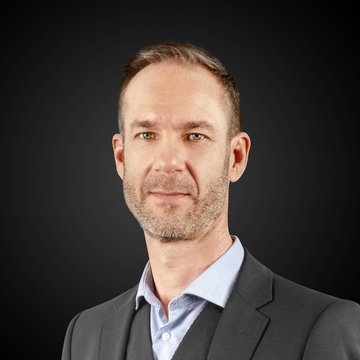The Effect of Laser Radiation on Tissue
Dr. Karl Stock from ILM at the University of Ulm. If you want to describe the biological and physical effect of light on tissue, you must first understand light dispersion in tissue to consequently understand the different interactions between light and tissue.
LIGHT DISPERSION IN TISSUE
Beyond Borders
The majority of light that meets tissue is reflected, transmitted, scattered, or absorbed. If light is absorbed, the absorbed light energy is either transmitted in the form of heat, fluorescence, or phosphorescence. Depending on the wavelength of the incoming light and the tissue type, the aforementioned effects occur in different amounts.
The reflection proportion largely depends on the refractive difference between air and tissue, as well as on the angle of incidence. Light that penetrates the tissue is either absorbed or scattered by microscopic structures such as, for example, cell components.
This scattering is responsible, for example, for the fact that a laser beam cannot be focused as needed in the tissue but rather that the spot diameter increases in size.
Absorption is the crucial mechanism in being able to use the applied laser energy in therapeutics. The probability at which radiated light is absorbed is described by the absorption coefficient µa. The reciprocal of µa is the mean free path that a photon travels in the tissue until it is absorbed. [1].
Important absorbers in tissue include:
- In the UV range: Peptide bonds and nucleic acids
- In the Vis range: Bilirubin, carotine, melanine, and hemoglobin
- In the IR range: Water and hydroxyl apatite.
As the blue curve shows in Fig. 2, the absorption in water in the infrared spectral range is particularly high (a depth of penetration of only 1 µm at a wavelength of 3 µm). This is why the 2.94 µm Er:YAG laser and the 10.6 µm CO2 laser are particularly well suited for cutting and removing soft tissue: it consists largely of water.
INTERACTION OF LIGHT WITH TISSUE
Beyond Borders
The characteristics of the tissue and the radiation parameters (wavelength, intensity, pulse energy, duration of radiation) lead to different effects:
Low Laser Power
In low laser power, fluorescence, for one, can be used to diagnose bladder tumors, for example. For another, photochemical processes are used in low-level laser therapy (LLT) and photodynamic therapy (e.g., in combination with methylene blue to kill bacteria).
Higher Laser Power
In higher power, thermal effects play an increasingly important role. In thermotherapy, the tissue does not sustain thermal damage. At approx. 60°C, the tissue coagulates (e.g., during ablation of the blood vessels) and at approx. 300°C the tissue vaporizes (which is referred to as so-called tissue vaporization). The latter is the effect used, for example, in surgery to cut soft tissue with a CO2 laser or diode lasers.
LASERS AND THEIR MECHANISMS
Beyond Borders
High-Power Pulsed Lasers
One particularly efficient type of tissue ablation is thermomechanical ablation, which is used in connection with pulsed lasers and high absorption in water. The high absorption and high power of the laser pulse causes the tissue to heat up suddenly. At approx. 100°C, the water vaporizes and the tissue rapidly increases in pressure, which can cause explosive tissue ablation. Due to fast and efficient ablation, the thermal damage of the tissue is significantly lower than with vaporization. In hard tissue, bones, teeth, and bladder and kidney stones, efficient and precise ablation can also be achieved, especially with Er:YAG lasers (see Fig. 3).
Excimer Lasers
Excimer lasers are used in the UV range with short pulses and high intensity. Thus, not only the absorption in tissue but also the energy of the single photon is so high that ablation occurs with single atoms. This photoabalation is used in particular in ophthalmology to correct corneal curvature.
Ultra-short Pulsed Lasers
In photodisruption, the atoms in focus are ionized with ultra-short pulsed lasers in the nano, pico, or even the femtosecond range. This produces microplasma that can expand extremely fast and create an acoustic shock wave. This shock wave leads, for example in LASIK surgery, to high-precision ablation that is also used to correct ametropia. In deeper tissue, plasma and the pigments in tattoos, for example, can also be destroyed.
SOURCES
Beyond Borders
[1] Lasertherapie der Haut, S. 26, R. Steiner, Springer-Verlag Berlin Heidelberg, 2013
Karl Stock, a doctor of human biology who also studied engineering, is the associate director of the Institute of Laser Technology in Medicine and Measurement Technology (ILM) at the University of Ulm and head of the equipment development workgroup. This workgroup primarily develops units and applicators for medical and dental applications – most often for industrial partners, such as, for example, laser methods for surgical and diagnostic applications, including those in the specialist areas of otorhinolaryngology (ENT medicine), urology, general surgery, and ophthalmology.
LASER COMPONENTS Nordic - Your competent partner for optical and optoelectronic components in Sweden, Norway, Finland, Denmark, and Iceland.
Welcome to LASER COMPONENTS Nordic AB, your expert for photonics components. Each product in our wide range of detectors, laser diodes, laser modules, optics, fiber optics, and more is worth every Crown (SEK). Our customized solutions cover all conceivable areas of application: from sensor technology to medical technology. You can reach us here:
Box 14001 / Skårs led 3
SE-400 20 Göteborg
Sweden
Phone: +46 (0)31 703 7173
Email: info(at)
